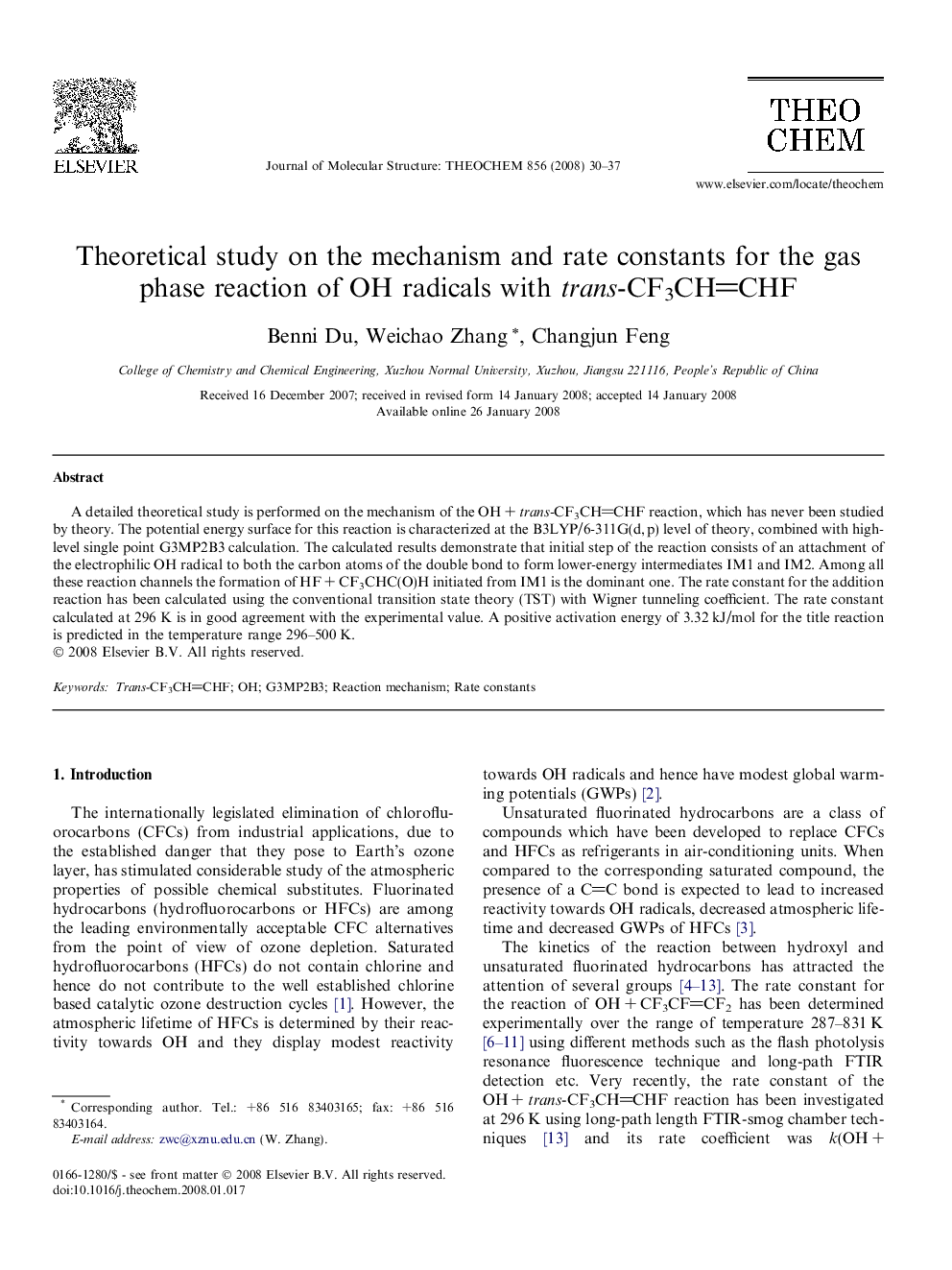| Article ID | Journal | Published Year | Pages | File Type |
|---|---|---|---|---|
| 5418370 | Journal of Molecular Structure: THEOCHEM | 2008 | 8 Pages |
Abstract
A detailed theoretical study is performed on the mechanism of the OH + trans-CF3CHCHF reaction, which has never been studied by theory. The potential energy surface for this reaction is characterized at the B3LYP/6-311G(d, p) level of theory, combined with high-level single point G3MP2B3 calculation. The calculated results demonstrate that initial step of the reaction consists of an attachment of the electrophilic OH radical to both the carbon atoms of the double bond to form lower-energy intermediates IM1 and IM2. Among all these reaction channels the formation of HF + CF3CHC(O)H initiated from IM1 is the dominant one. The rate constant for the addition reaction has been calculated using the conventional transition state theory (TST) with Wigner tunneling coefficient. The rate constant calculated at 296 K is in good agreement with the experimental value. A positive activation energy of 3.32 kJ/mol for the title reaction is predicted in the temperature range 296-500 K.
Keywords
Related Topics
Physical Sciences and Engineering
Chemistry
Physical and Theoretical Chemistry
Authors
Benni Du, Weichao Zhang, Changjun Feng,
